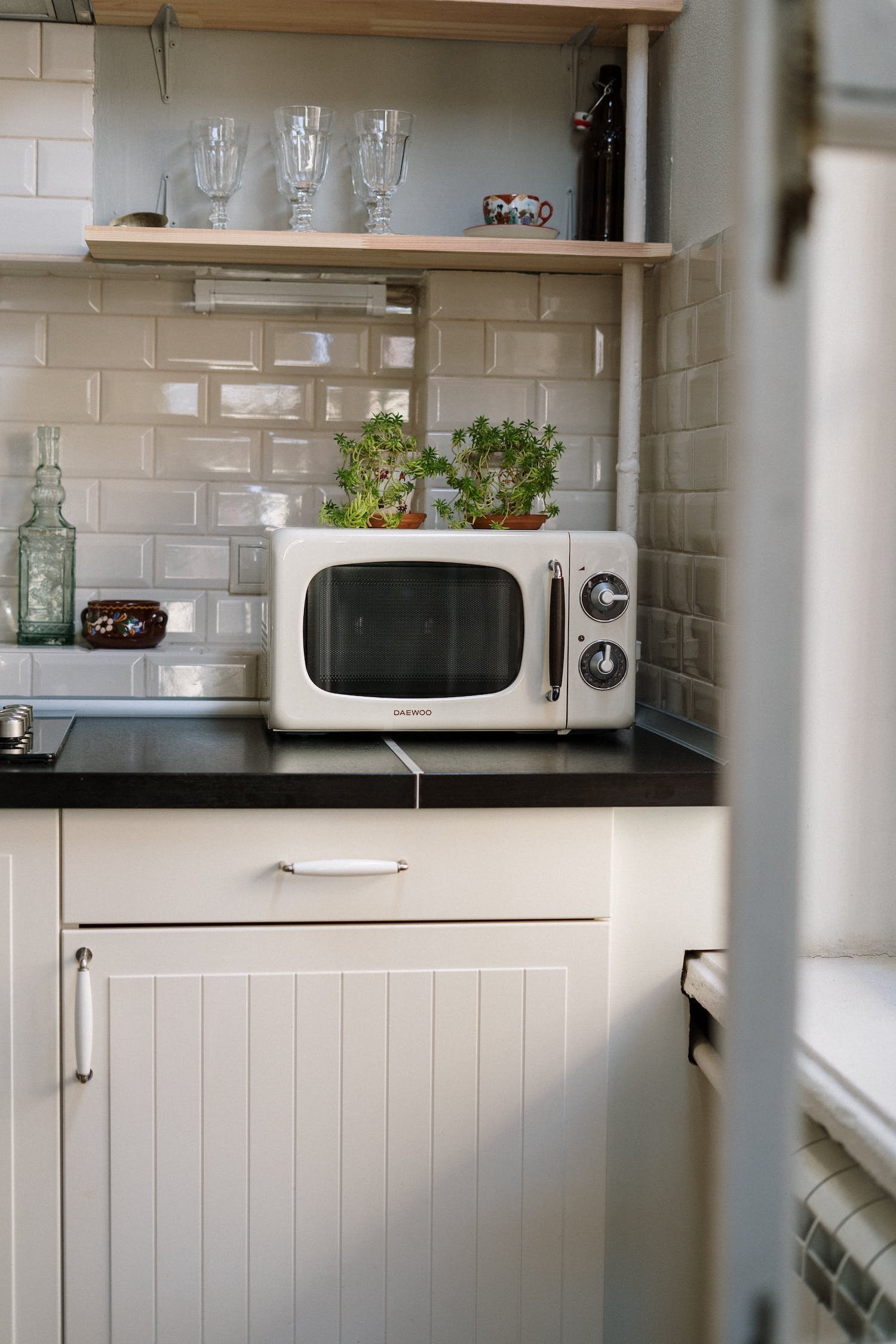Why Does My Microwave Keep Tripping The Breaker?
Nothing is more frustrating than popping something in the microwave and the breaker tripping.
Usually, it’s a simple fix involving going back to your breaker panel and flipping the circuit back on. You may only need to move appliances around, but there could be a serious problem if it trips repeatedly.
Today, we’re investigating why turning on your microwave can cause your circuit breaker to trip.
Reasons that your microwave could be tripping your breaker
Your home’s electrical supply comes in through an electrical panel that separates it into circuits. Each one of these can handle a prescribed amount of load. Appliances draw power and reduce the remaining capacity available to you. A tripped breaker lets you know you’ve overloaded the circuit and must assess the problem.
Most of the time, an overloaded circuit breaker is a quick fix. Moving some appliances around or simply adjusting your routine might work for a while. But finding out the root of the problem is necessary for the safe operation of your electric system.
There are too many appliances plugged in at the same time
If running your microwave keeps tripping the breaker, it could be that there are too many appliances plugged into the circuit. Each machine requires a certain amperage to function correctly. The issue arises when you ask the circuit for more amps than it can safely deliver.
Running too many high amp devices on the same circuit can cause a repeated problem. To solve it, you’ll need to diagnose the cause.
Your microwave itself is defective
If you’ve ruled out circuit overload as the problem, your microwave could be defective. These devices are standard in homes, but that wasn’t always the case. In the 1970s, scientific advances made these high-tech cooking gadgets possible. They work by injecting foods with energy waves that agitate water, fat, and sugar.
While you only press the “start” button, a complex process makes this type of conductive heating possible. Out of all appliances in your kitchen, they draw a higher number of amps than many others.
What can make a microwave defective?
The complex nature of your microwave means several parts can break. Here are some of the most common issues you’ll run into.
See if the turntable motor is messed up
Most microwaves have an electrical turntable to make even cooking possible. When you activate the appliance, the motor rotates a plate to avoid a cold spot in your food. Depending on how dense the product is, part of it can be exposed to more waves, heating unevenly.
The easiest way to tell if there’s a problem with the turntable motor is to activate the device and watch. If the plate isn’t spinning, make sure that it’s seated correctly. Once you’ve determined that the motor isn’t functioning, it’s easy to replace it.
Your microwave may have a blown fuse
All electrical appliances have fuses that regulate the amount of electricity they draw. Like a circuit breaker, a blown fuse stops the flow and shuts off the device. Microwaves have several that protect you from harmful radiation leaking out.
If you’re comfortable using a multimeter, you can diagnose this problem yourself. Unplug your device from the power outlet and then remove the fuses. Test them to ensure they’re working as they should before moving on to the next potential cause.
A faulty capacitor can ruin your microwave
One of the first signs you have a faulty capacitor on your hands is that food isn’t heating properly. You might see longer cooking times or no warming at all. Additionally, sparking, smoking or loud humming could occur during operation.
Sparks don’t always mean a capacitor issue. Check to make sure you didn’t accidentally put metal in your microwave oven. There could also be a short circuit in the power cord or buried deep in the device.
We don’t recommend trying to fix this one on your own. Capacitors are complex devices and require specialized knowledge and experience to repair.
The microwave door may not be working properly
When your microwave operates, the magnetometer releases radiation into the cooking chamber. The door protects you from these waves escaping and is an essential failsafe when cooking. There’s even a fuse in the door that blows when it’s not working correctly.
Latch issues are pretty easy to fix. There’s a torsion spring that’s simple to replace and keeps the door shut when operating. You may also be looking at loose hinges, another easy fix!
Steps to take after identifying the problem
Ruling out your device is the first step toward any fix. Check the microwave on a different circuit to make sure it’s working. If it’s functioning correctly, your issues lie within your electrical system.
See if a dedicated circuit breaker would be worth it
Modern homes contain several appliances that draw a significant amount of power. Your kitchen circuit may not have enough power to support them functioning simultaneously. If so, you could have a dedicated circuit installed through your breaker box.
An electrician can drop in a new outlet only meant for one device. This ensures you don’t have the same problem in the future. Since most appliances require a 20 to 30-amp circuit, it could be worth the investment. Costs range from $250 to $900 on average, including parts and labor.
Contact a professional electrician to fix the problem
Working with electricity isn’t something we usually recommend you tackle alone. The risk of electrocution or fires is too great to ignore. Call the professionals if you can’t diagnose why your microwave keeps tripping the breaker. They’ll have the tools and experience to tell you what’s happening in your kitchen.
Look for fully licensed and insured technicians for the best quality work.
Young Cardinal Electric is here to fix any residential problem you run into!
When residential electrical problems get in your way, the folks at Young Cardinal are only a phone call away. We’re dedicated to honest, professional service and take pride in the work we do. We’ll take the time to explain what’s happening before we fix the issue so you know you’re getting exactly what you expect.
Whether you need a new outlet for your electric vehicle or just your toaster oven, get in touch with us today!


